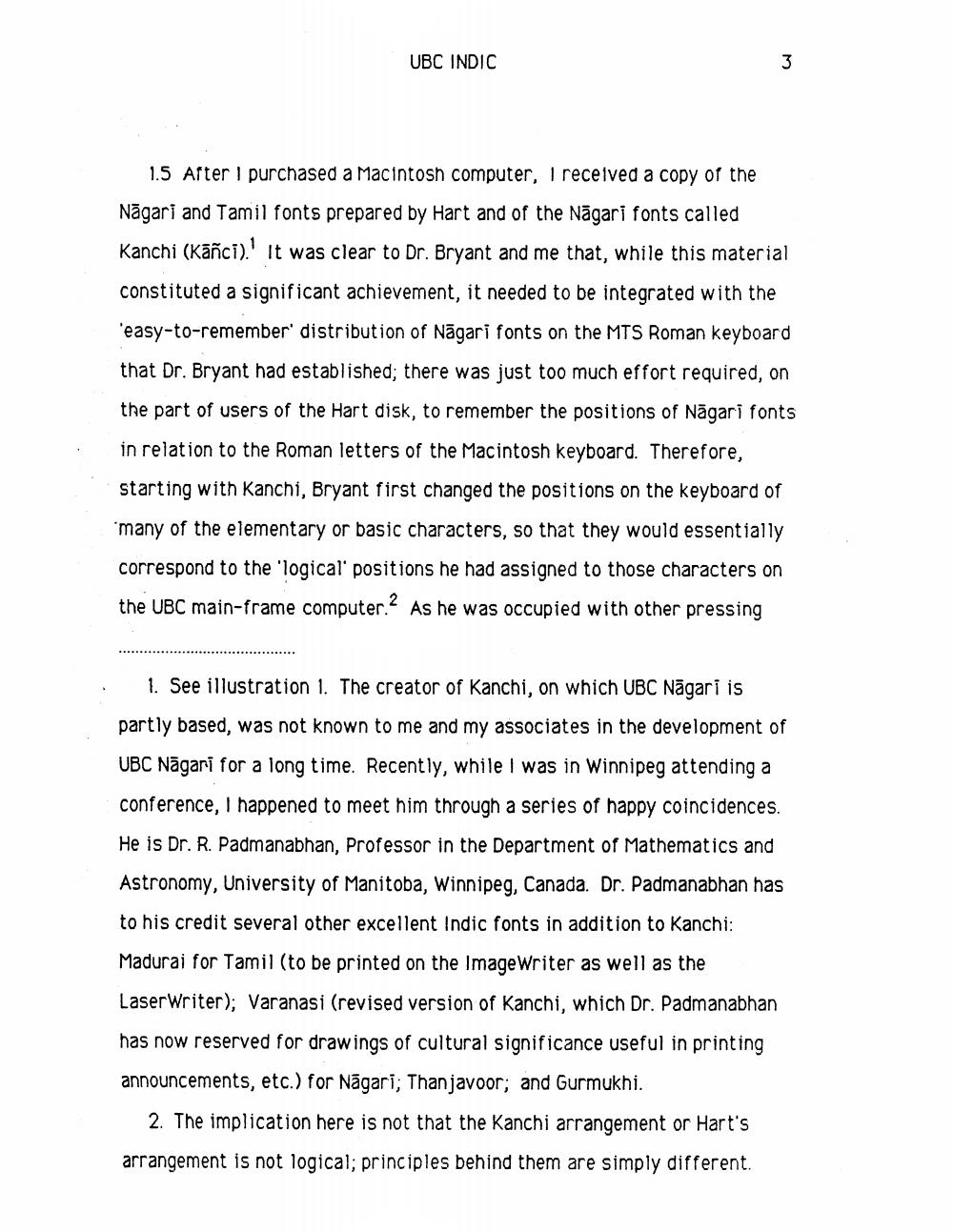________________
UBC INDIC
1.5 After I purchased a Macintosh computer, I received a copy of the Nāgari and Tamil fonts prepared by Hart and of the Nāgari fonts called Kanchi (Kāñci). It was clear to Dr. Bryant and me that, while this material
constituted a significant achievement, it needed to be integrated with the
'easy-to-remember' distribution of Nāgari fonts on the MTS Roman keyboard
that Dr. Bryant had established; there was just too much effort required, on the part of users of the Hart disk, to remember the positions of Nāgari fonts in relation to the Roman letters of the Macintosh keyboard. Therefore,
starting with Kanchi, Bryant first changed the positions on the keyboard of
many of the elementary or basic characters, so that they would essentially
correspond to the 'logical positions he had assigned to those characters on the UBC main-frame computer.? As he was occupied with other pressing
1. See illustration 1. The creator of Kanchi, on which UBC Nāgari is partly based, was not known to me and my associates in the development of UBC Nāgari for a long time. Recently, while I was in Winnipeg attending a conference, I happened to meet him through a series of happy coincidences. He is Dr. R. Padmanabhan, Professor in the Department of Mathematics and Astronomy, University of Manitoba, Winnipeg, Canada. Dr. Padmanabhan has
to his credit several other excellent Indic fonts in addition to Kanchi:
Madurai for Tamil (to be printed on the Image Writer as well as the
LaserWriter); Varanasi (revised version of Kanchi, which Dr. Padmanabhan
has now reserved for drawings of cultural significance useful in printing
announcements, etc.) for Nāgari; Thanjavoor; and Gurmukhi.
2. The implication here is not that the Kanchi arrangement or Hart's arrangement is not logical; principles behind them are simply different.




